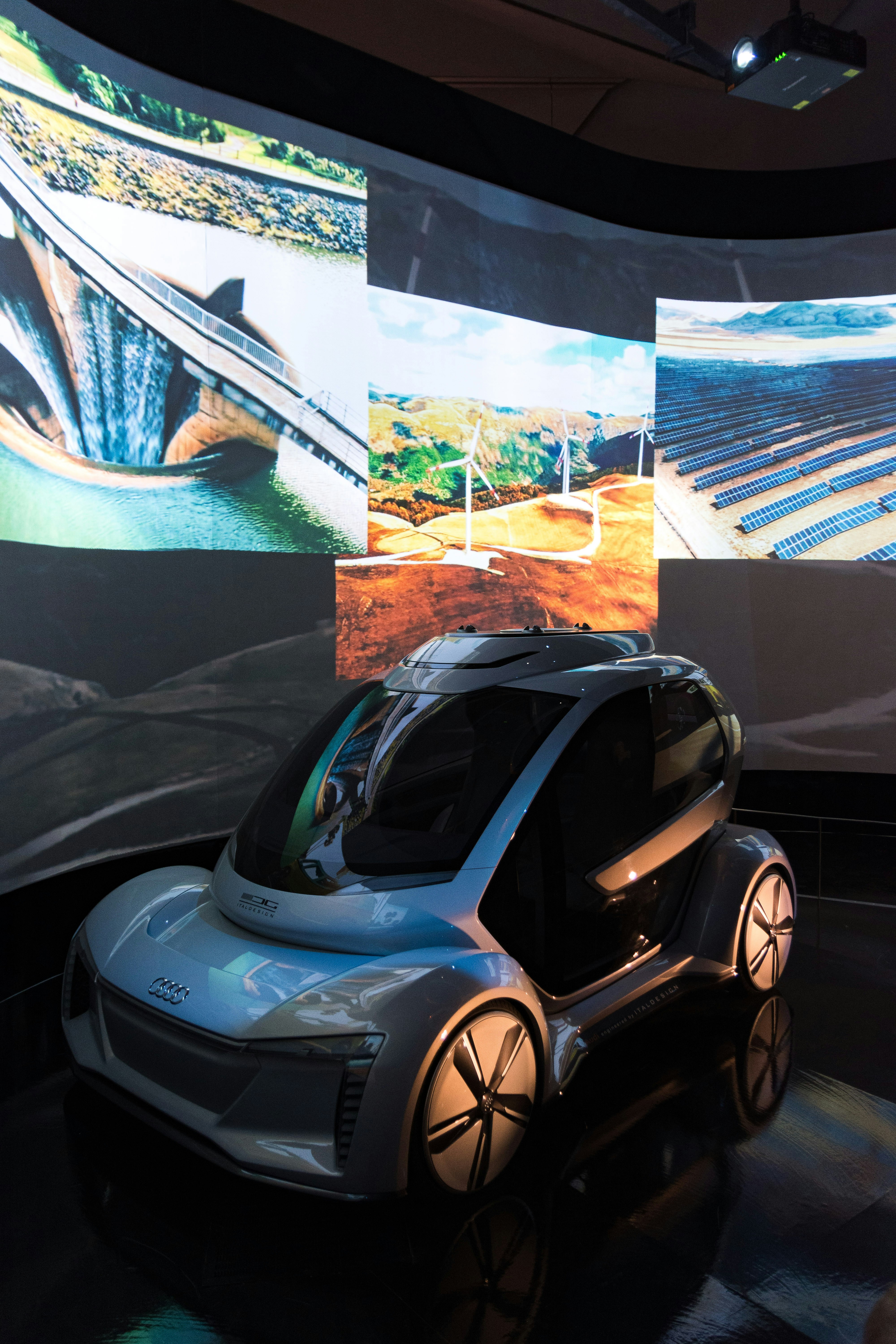
Harnessing AI for Climate Modeling and Sustainability: A Paradigm Shift

Revolutionizing Climate Modeling with AI
The integration of artificial intelligence (AI) into climate modeling has brought about a significant transformation in the field. Traditional climate models, while valuable, often require extensive computational resources and time to process and analyze complex climate data. However, the advent of machine learning techniques has enabled researchers to develop climate emulators—lightweight neural networks that can simulate decades or even centuries of climate data in a remarkably reduced timeframe. This advancement allows for a more efficient means of understanding climatic changes, paving the way for innovative research methodologies.
Machine learning algorithms excel at identifying patterns within large datasets, making them ideally suited for climate modeling. By training these algorithms on historical climate data, researchers can create sophisticated models that are capable of producing accurate forecasts with significantly less computational burden. This shift not only accelerates the modeling process but also enhances the precision of long-term climate predictions. As a result, policymakers and environmental scientists can access timely and reliable data, facilitating more informed decision-making regarding climate adaptation and mitigation strategies.
Moreover, the rapid processing capabilities of AI-driven climate emulators have profound implications for assessing climate risks and trends. With the ability to generate multiple simulations in a fraction of the time traditionally required, these advanced models can support frequent evaluations of various climate scenarios. This ultimately leads to a greater understanding of potential climate-related impacts on ecosystems, economies, and communities worldwide. The speed and accuracy of AI in climate modeling can thus contribute to proactive measures in tackling climate change, making it an invaluable tool for researchers and decision-makers alike.
Optimizing Decarbonization Efforts through AI
Artificial Intelligence (AI) has emerged as a transformative tool in optimizing decarbonization efforts across various sectors. By leveraging intelligent systems, organizations can manage complex smart grids, effectively integrating renewable energy sources while minimizing industrial emissions. The ability of AI to analyze vast datasets enables real-time decision-making that is critical in transitioning to more sustainable practices.
In the energy sector, AI-assisted technologies have facilitated the development of smart grids that optimize energy distribution and consumption. Through predictive analytics, these systems can forecast demand fluctuations, thus enabling operators to adjust energy supply accordingly. This results not only in enhanced efficiency but also in a significant reduction in reliance on fossil fuels. For instance, renewable energy sources such as wind and solar can be more effectively integrated into the grid, ensuring that the generated energy is used optimally, thereby lowering overall carbon emissions.
Industries known for high emissions, such as cement and steel production, have also benefited from AI integrations. The implementation of smart sensors and machine learning algorithms allows for real-time process optimization. Through continuous monitoring and adjustment of industrial processes, companies can significantly reduce carbon footprints. Case studies demonstrate that AI systems can lead to up to a 20% decrease in emissions by fine-tuning production methods, enhancing efficiency in energy use, and identifying opportunities for waste reduction.
Moreover, predictive analytics play a crucial role in resource management. With AI, industries can anticipate the needs for raw materials, energy consumption, and logistics. This not only streamlines operations but supports a circular economy by optimizing resource use and minimizing waste. The integration of AI technologies into decarbonization efforts represents a significant advancement in the pursuit of sustainability and offers a pathway towards achieving net-zero emissions targets.
Real-Time Environmental Monitoring Powered by AI
As the effects of climate change and environmental degradation become increasingly evident, the use of artificial intelligence (AI) for real-time environmental monitoring has gained considerable traction. AI technologies are revolutionizing how we collect, analyze, and respond to environmental data, ensuring that conservation efforts are informed by accurate and timely information. These advanced systems leverage vast amounts of data from various sources, including satellites, drones, and ground sensors, to detect and address pressing environmental issues such as pollution, deforestation, and biodiversity loss.
One of the most significant advancements in AI technology is its ability to process and analyze data at unprecedented speeds. Using machine learning algorithms, AI systems can identify patterns and anomalies in environmental data with remarkable precision. For instance, in areas facing pollution challenges, AI can analyze air and water quality data in real-time, allowing for rapid detection of hazardous changes. This capability not only facilitates the immediate assessment of environmental conditions but also supports proactive measures to mitigate pollution impacts.
Moreover, AI technologies are proving instrumental in monitoring deforestation and habitat loss. By utilizing high-resolution satellite imagery along with deep learning techniques, AI can accurately map forest cover changes and detect illegal logging activities. These insights enable stakeholders, including governments and conservation organizations, to enact timely interventions to preserve vital ecosystems.
Furthermore, AI enhances biodiversity monitoring by identifying species presence through camera traps and acoustic sensors. This facilitates greater understanding of ecosystem health and threatens species populations. The timely and precise data generated through these AI-driven systems ensures that environmental policies and actions are based on current conditions, ultimately delivering better outcomes for sustainability efforts.
In conclusion, the implementation of AI in real-time environmental monitoring represents a significant advancement in our ability to address environmental challenges. By harnessing innovative technology, stakeholders are better equipped to respond to urgent issues affecting our planet, resulting in more effective conservation and disaster management strategies.
Future Perspectives: AI’s Role in Climate Solutions
The integration of artificial intelligence (AI) into climate modeling and sustainability efforts has the potential to revolutionize how we address environmental challenges. As we look to the future, it is essential to consider how advancements in machine learning and data analytics can further enhance the precision and reach of climate solutions. Ongoing research in AI is likely to lead to more accurate climate forecasts, allowing for better preparedness against climate-related events. Enhanced algorithms can analyze vast datasets from various sources to predict weather patterns, track carbon emissions, and assess ecological impacts more effectively than traditional methods.
Moreover, the efficiency of these AI applications can significantly reduce the time required to generate actionable insights. This efficiency is crucial for policymakers and industries in making informed decisions regarding environmental regulations and sustainability initiatives. Scalability is another notable advantage; AI systems can be adapted and scaled to fit different regional needs, enabling tailored solutions for varying climatic conditions. This adaptability opens doors for small communities and under-resourced areas to implement advanced AI-driven strategies to combat climate change.
Collaborative efforts between academia and industry play a pivotal role in harnessing the full potential of AI in climate solutions. By pooling resources and expertise, researchers and industry leaders can drive innovation while sharing best practices and lessons learned. For those interested in exploring AI applications for climate action, platforms such as useaihub.tech offer valuable insights and resources aimed at fostering collaborative initiatives. The future of climate solutions, underscored by AI’s transformative capabilities, suggests a new paradigm in which predictive models are refined, investments are directed more efficiently, and sustainable practices are not only achievable but practical on a global scale. This interconnected approach will be key in navigating the complexities of climate change and ensuring a more sustainable future for all.

 RAQ Education London
RAQ Education London